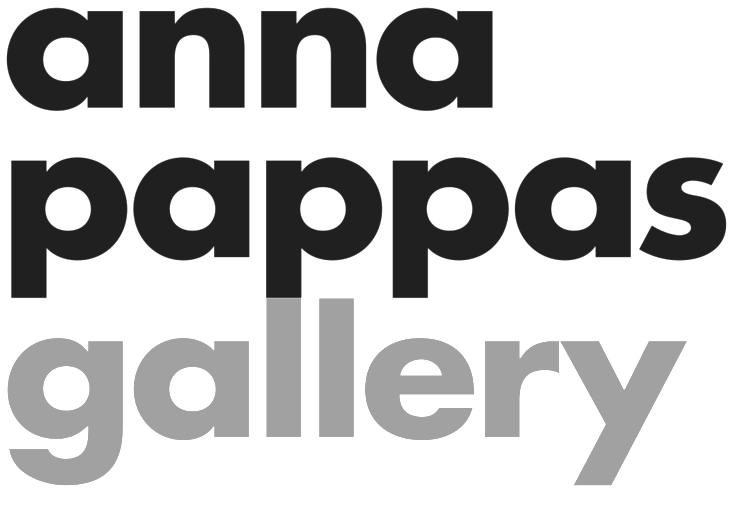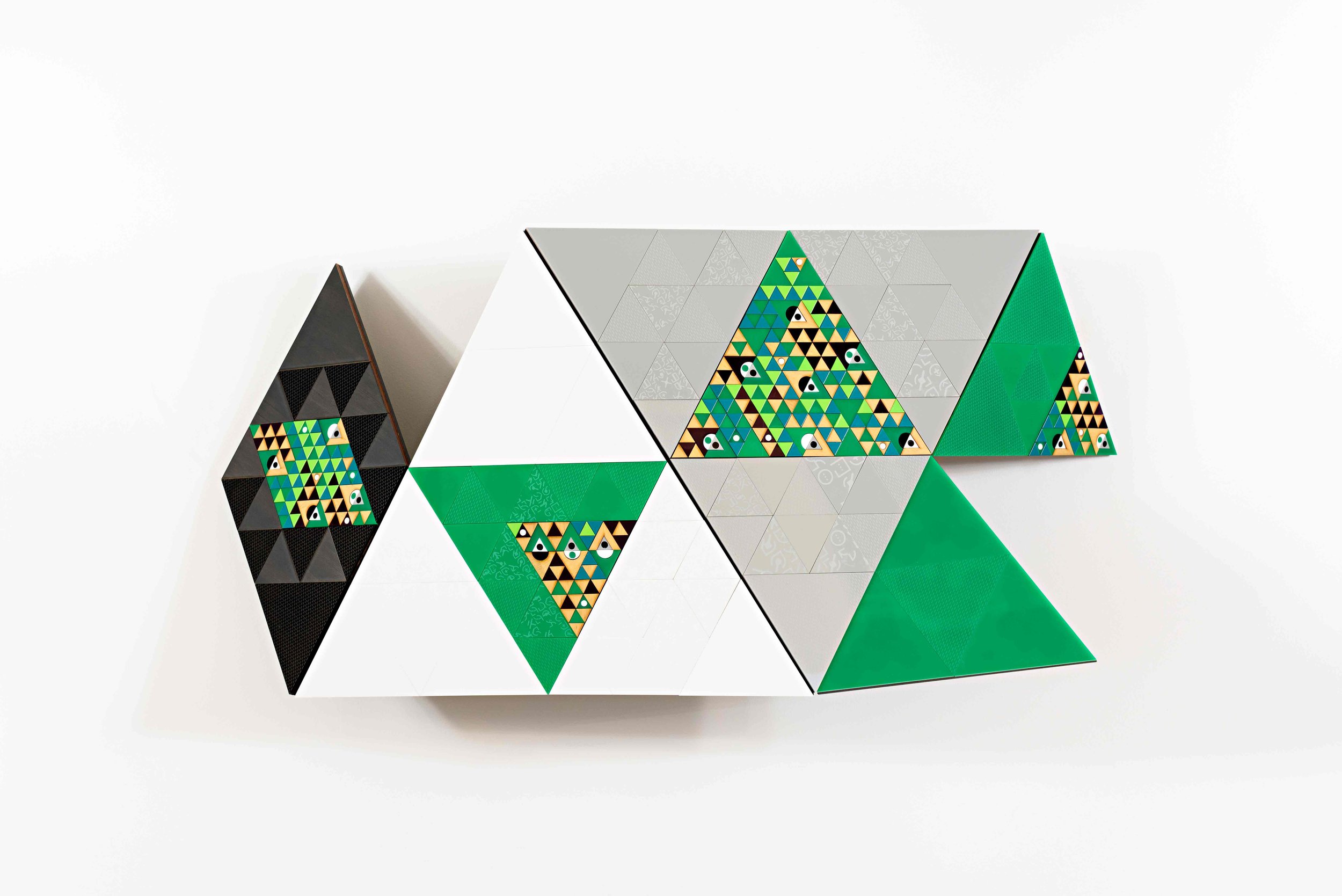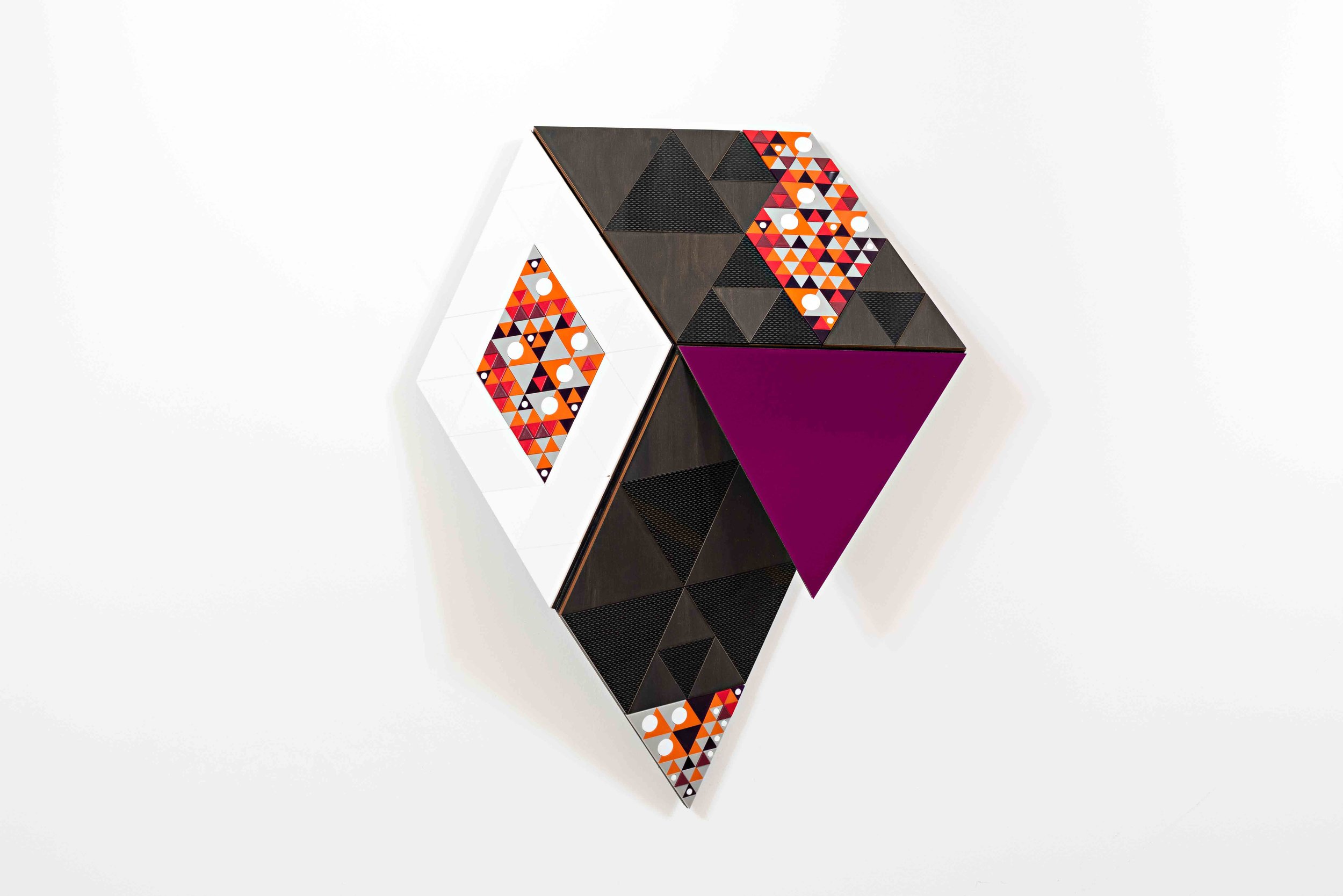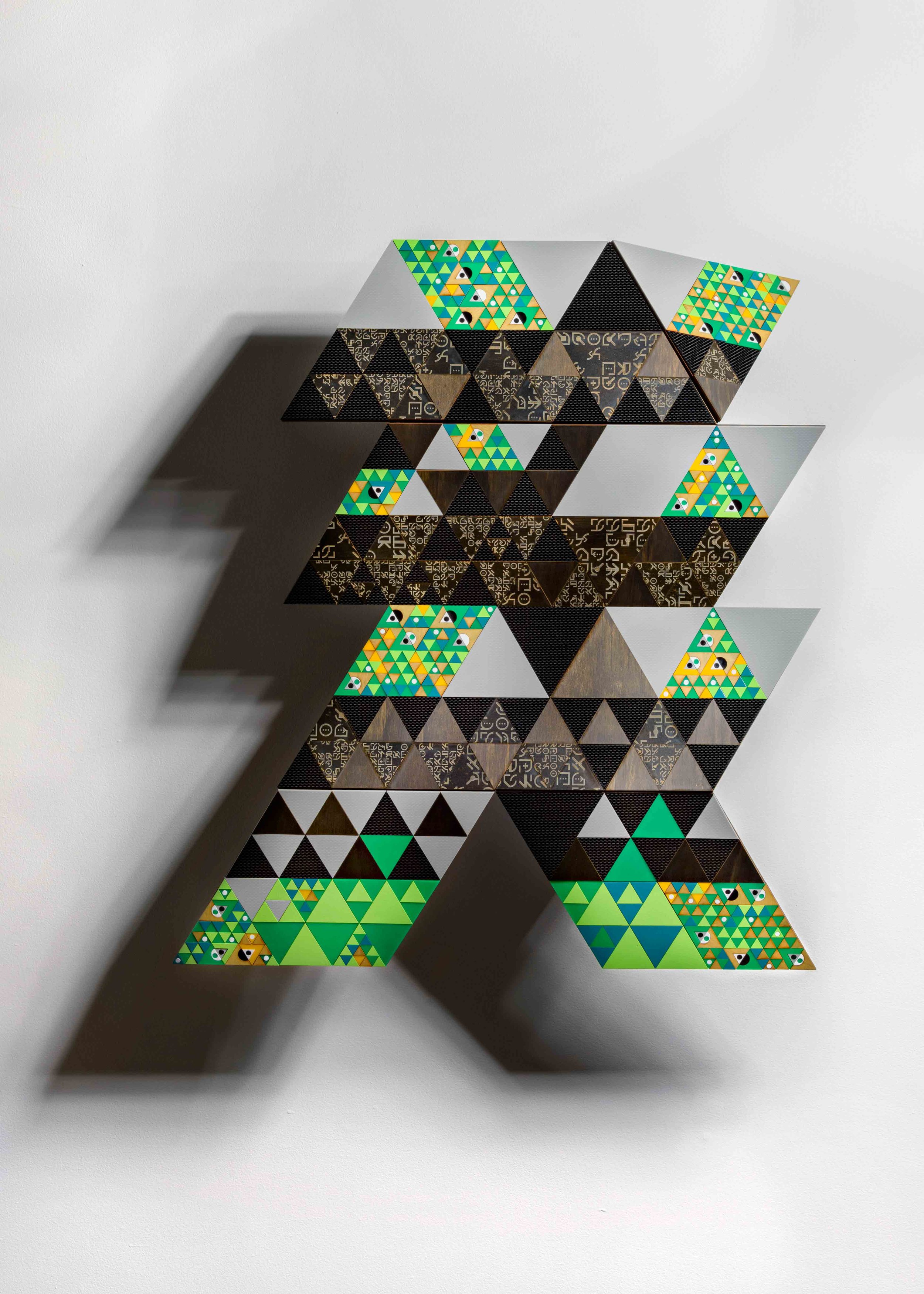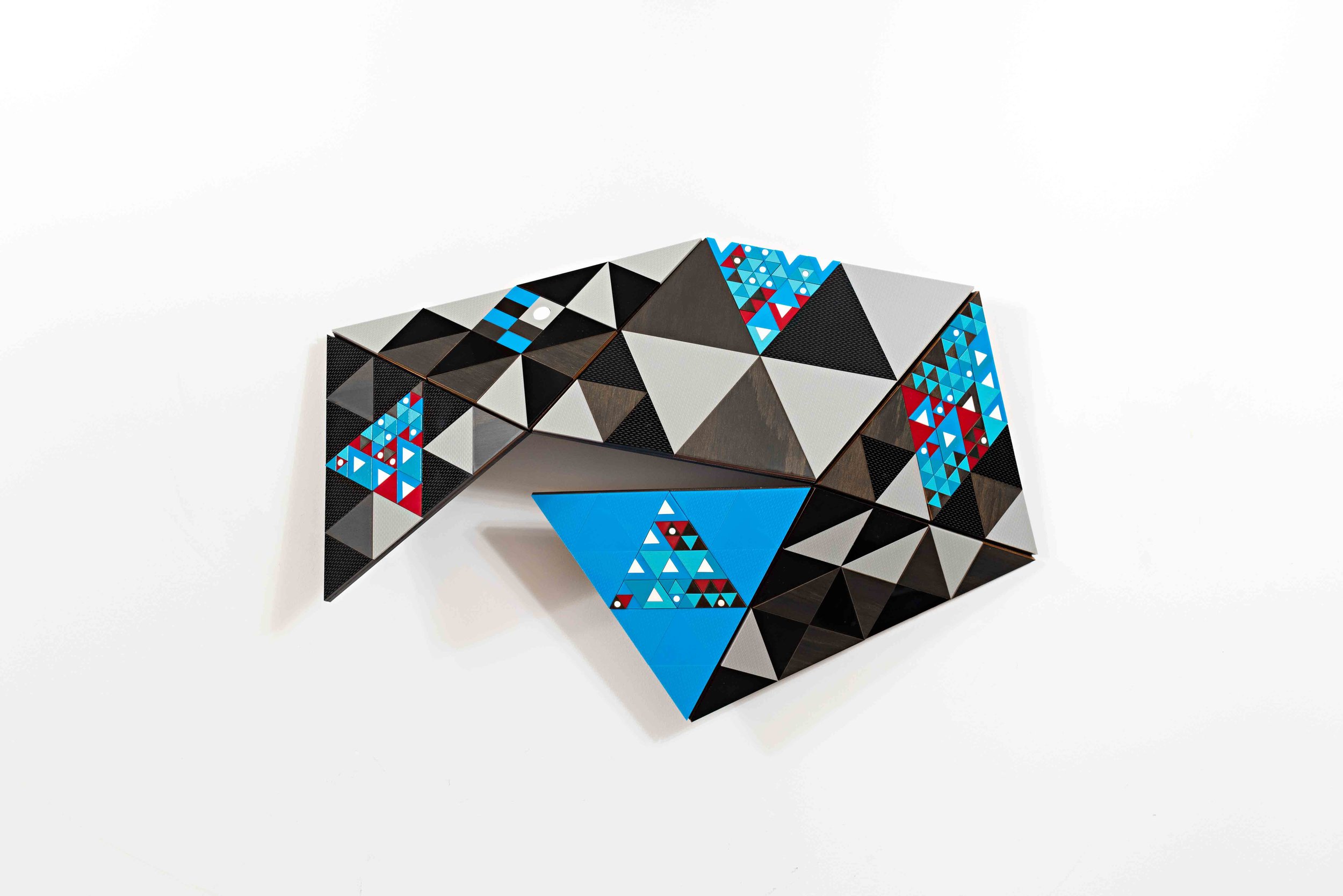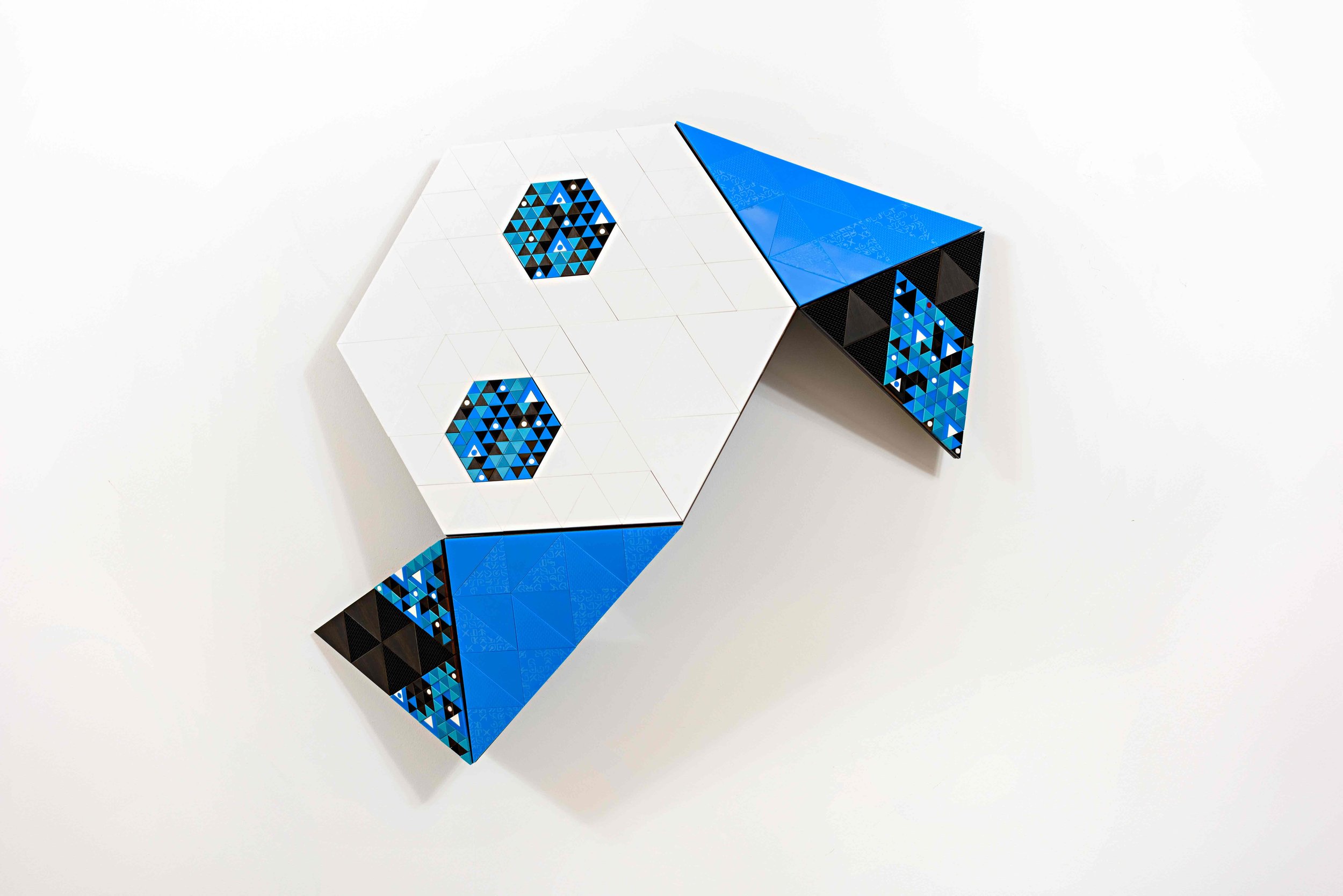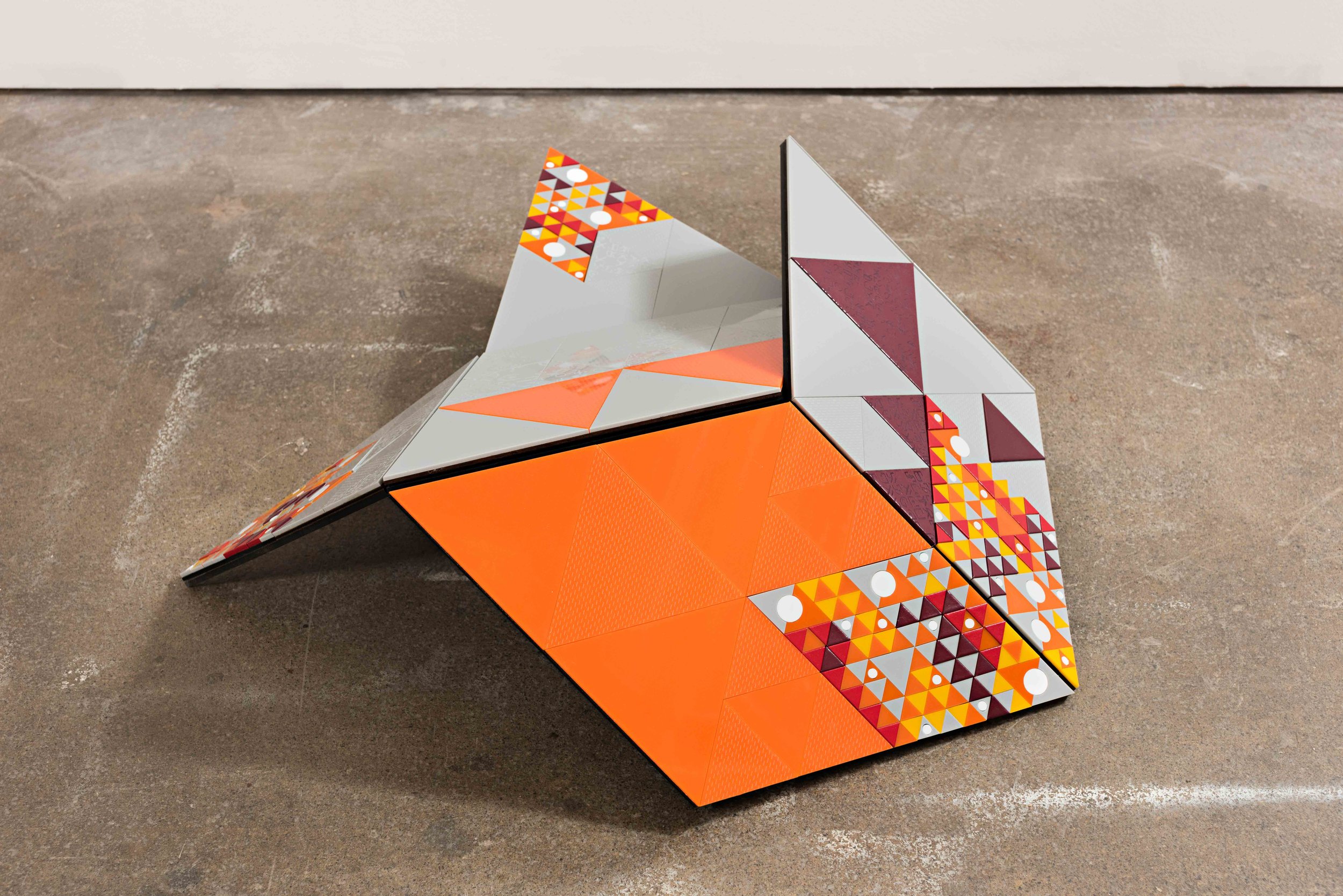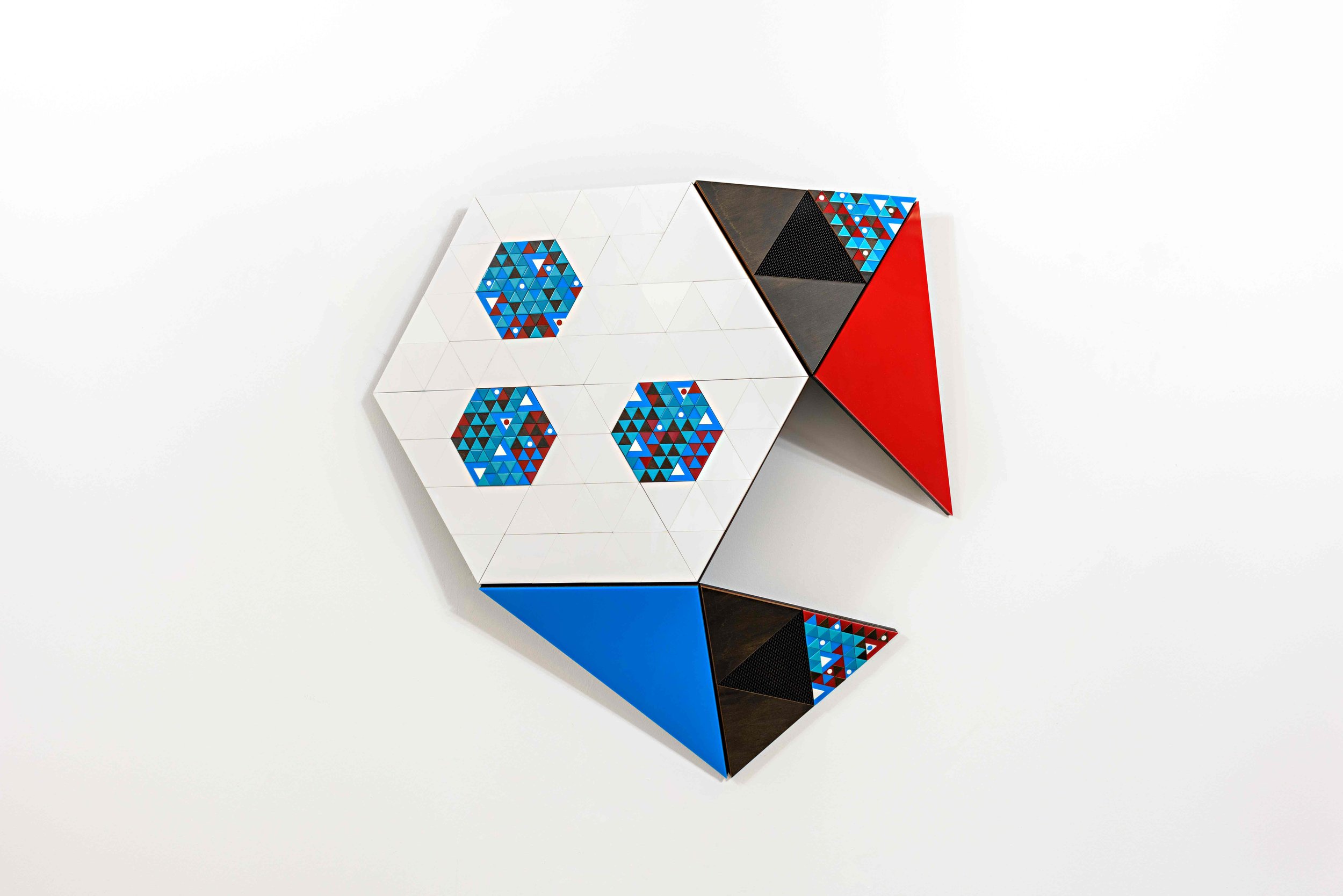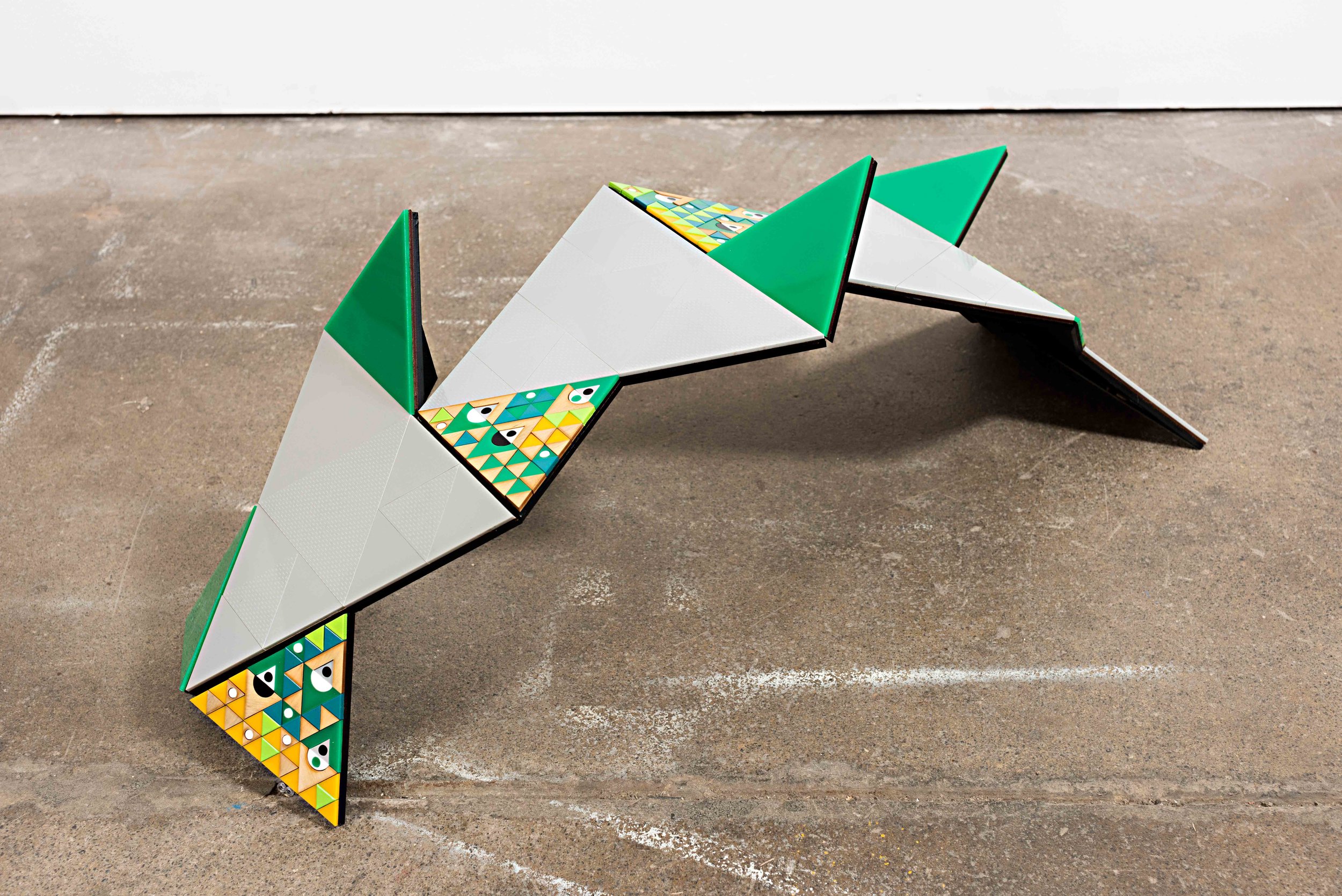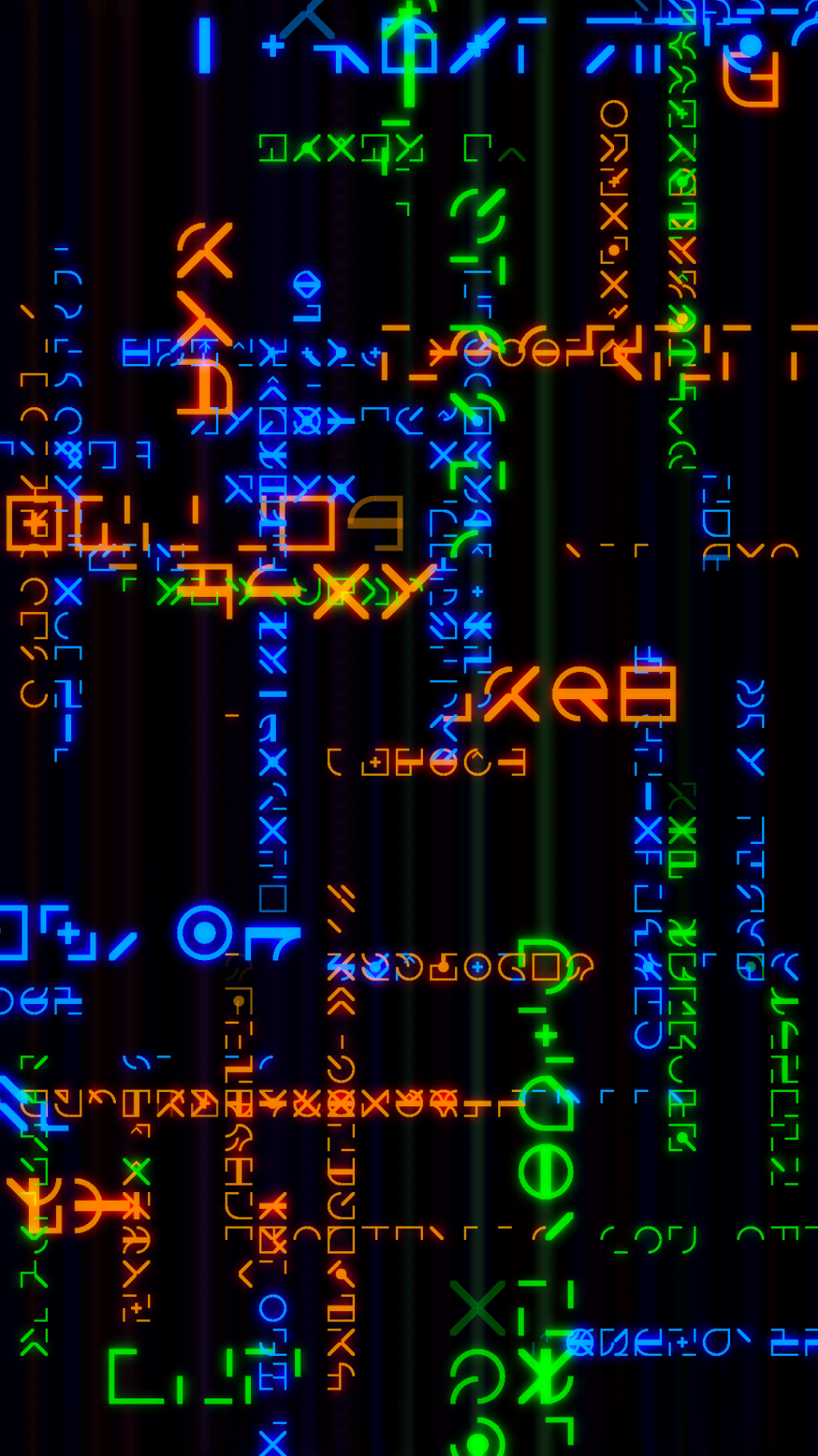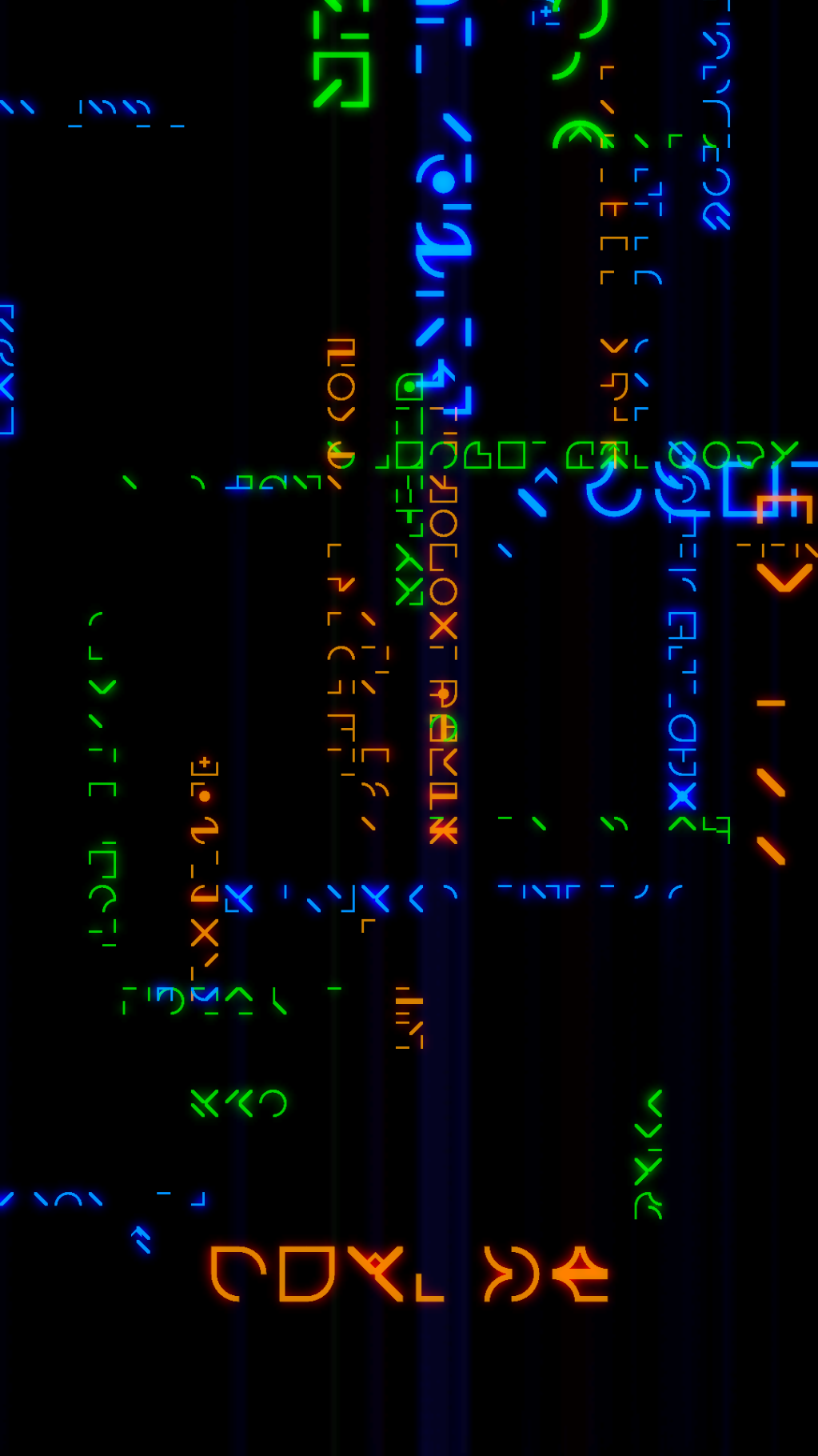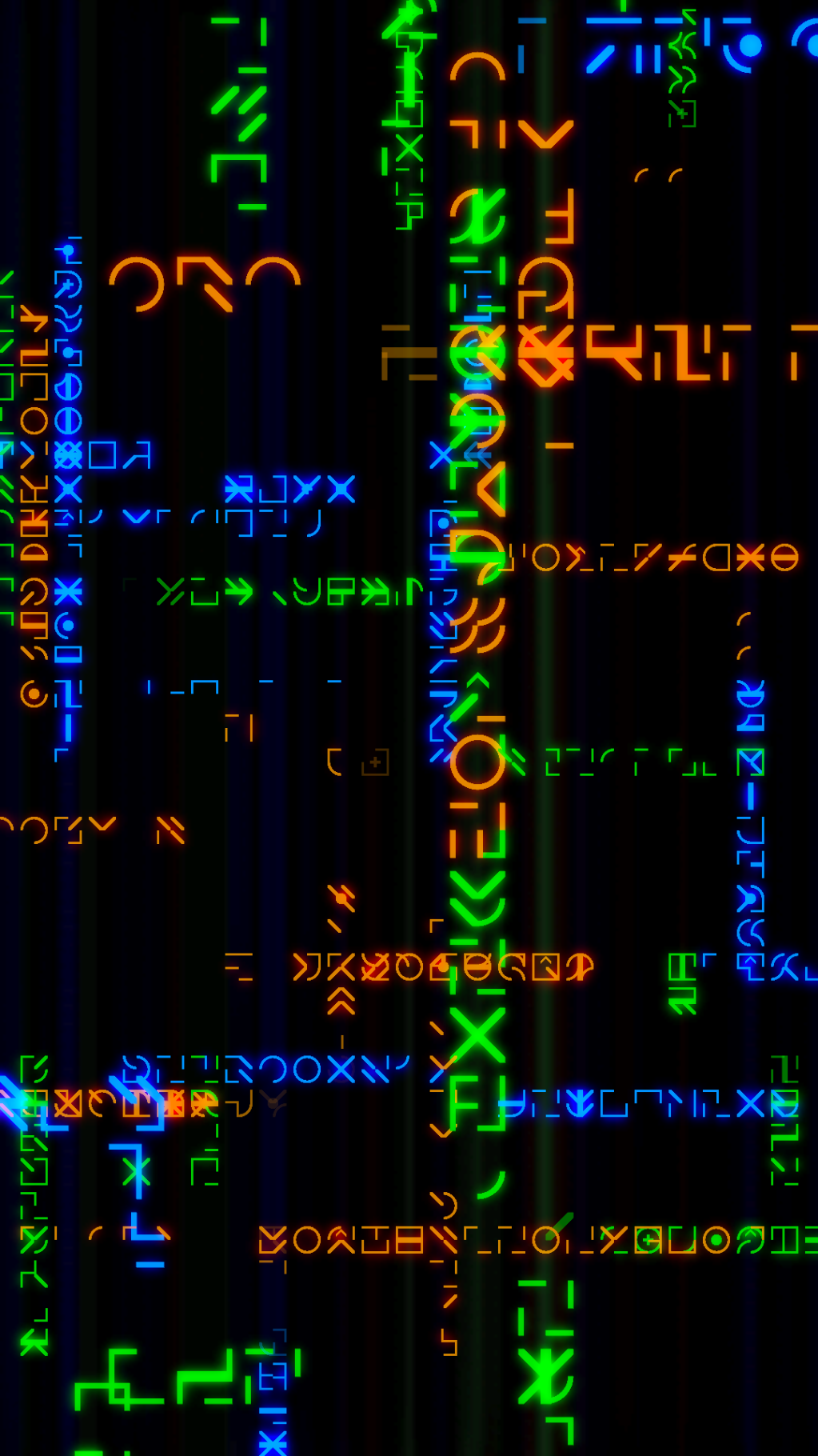Troy Innocent, Correlation Clustering, 2016 laser cut plywood, hardboard and acrylic with augmented reality, 52 x 32 x 26cm
Exhibition Opening: Friday 24 March 6pm-8pm
Exhibition to be introduced by Aaron Martin (Five Walls Projects)
Digital Abstract catalogue essay by Giles Fielke
In Pattern Recognition, Troy Innocent interrogates the hidden potential of geometric abstraction, through the visual language of code. For this exhibition, Innocent places agency in the hands of the viewer, challenging the static nature of sculptural forms. Through the use of an augmented reality application, the viewer reveals layers of animation, information and music, coded within the geometric language of Innocent’s works.
From digital maps for wayfinding, to visualisations of climate change, or the predication of election results, pattern recognition is central to this worldview, as it is coded into the abstractions through which we understand the contemporary world. In this exhibition, Innocent applies strategies of pattern recognition to psychogeographic abstractions – spatial maps of cities he has walked, folded in time and space.
As Innocent states: ‘code mediates and creates the world simultaneously, giving rise to a rich multiplicity of meaning as it traverses the virtual and the actual.’
In the 1990s, Innocent represented the vanguard of Australian new media arts as the co-founder of the digital arts collective Cyber Dada. With Cyber Dada, Innocent heralded the cyber world as an ‘enveloping phenomenon, a techno-determinist vision of change’ and presented pioneering collaborative and collective digital works, including the language-oriented, interactive CD-ROM artwork Idea-ON! (1992).
Recent solo exhibitions see Innocent combine digital innovation, specifically coding, with sculptural forms and geometric abstraction. These exhibitions include Double Abstraction (2016), Five Walls Projects, Melbourne and New Abstraction (2015), Anna Pappas Gallery, Melbourne.
For Asemic Writing 1 (2013), Hugo Michell Gallery, Innocent mediated the visual language of graffiti through screen-based digital works. Nine Signs for Ogaki (2012) Hugo Michell Gallery, stemmed from Innocent’s 2010 residency at IAMAS – an Art & Science research institute in Ogaki, Japan – where the artist surveyed the landscape around him, creating visual codes and dispersing them throughout the town. Innocent’s work in Japan informed the exhibition Tokyo Pop // Ludean Play, at Trocadero Art Space, Melbourne (2011), which documented the artist’s engagements with play and mapping across Tokyo. Other solo exhibitions exploring language, cityscapes and digital media include Scenes from Ludea, Boutwell Draper Gallery, Sydney (2006) and Ludea, Tolarno Galleries, Melbourne (2005).
Digital engagements with urban cityscapes inform Innocent’s strong public art presence, and includes works such as Zydnei (2013), an interactive street game exploring the lasting effects of colonisation, a work coinciding with the 2013 International Symposium on Electronic Art (ISEA), Sydney. Innocent presented an interactive sculpture garden entitled Colony (2008) in the Melbourne Docklands, and an alternate reality game reinventing the history of Melbourne, Urban Codemakers (2010), Docklands, as well as x-milieu, Federation Square Melbourne (2008) and Field of Play, Melbourne Docklands (2007).
Group exhibitions have taken place at the National Gallery of Victoria, Melbourne; National Portrait Gallery, Canberra; Museum of Contemporary Art, Sydney; Museum of Contemporary Art, Helsinki, Finland; Tate Gallery, Liverpool, UK; Performance Space, Sydney and the State Library of Victoria, Melbourne. Innocent is represented in numerous collections, including the V&A Museum, London, ACMI, Artbank, the Lyon Collection, and other private collections.
Innocent holds a PhD in Animation and Interactive Media from RMIT University, Melbourne.
